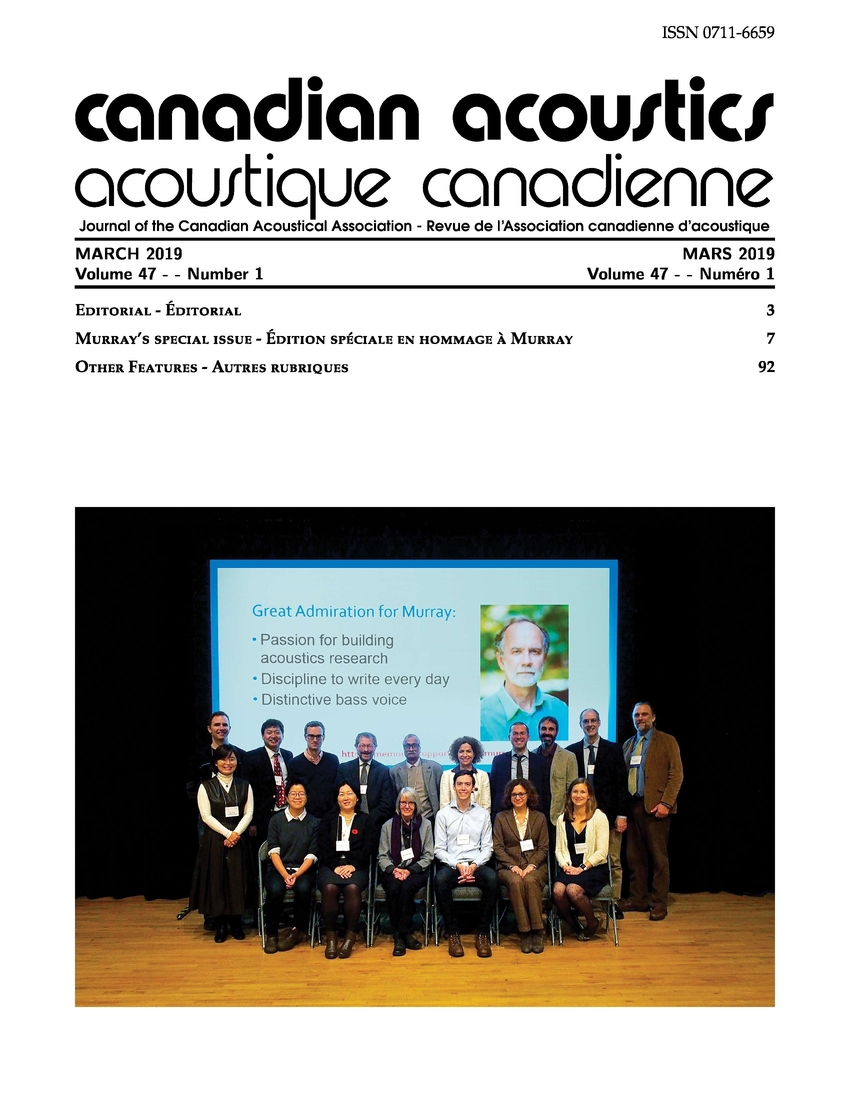Surfaces concaves et acoustique des salles de spectacle - Partie 2 - Analyse ondulatoire
Mots-clés :
Surfaces concaves, focalization, théorie des ondes, répartition des niveaux de pression sonore, , simulation acoustique.Résumé
La croyance conventionnelle nous amène à penser que le fait d'avoir des surfaces concaves comme enveloppe d’une pièce occupée ne produit pas un son de qualité. L'effet du point focal des surfaces concaves peut provoquer des niveaux de pression acoustique élevés, des colorations et des échos. Cependant, tout au long de l’histoire, de nombreuses pièces avec des grandes surfaces incurvées semblent produire de bonne acoustique. Des recherches récentes ont suggéré de procéder à une analyse des ondes pour établir l'impact des surfaces concaves. Contrairement à la partie I de cette étude, l’évaluation de la distribution des niveaux de pression acoustique dans les pièces à surfaces concaves, a été réalisée en résolvant l’équation des ondes. La raison principale en est que la théorie de rayon image n'est valide qu'à des fréquences supérieures à la fréquence de coupure de Schroeder. La théorie des ondes est utilisée pour les fréquences inférieures à 100 Hz. La modélisation par éléments finis a été appliquée pour résoudre le problème de la distribution du niveau de pression acoustique dans les pièces présentant des surfaces concaves. Dans cette étude, trois lieux ont été étudiés : la galerie Paul Cocker à l’Université Ryerson à Toronto, l’église Anglicane St. Pauls à Toronto, et le Wigmore Hall à Londres. Les résultats pour trois fréquences de basses (25 Hz, 50 Hz et 100 Hz) ainsi que leur combinaison seront présentés dans cette étude.Fichiers supplémentaires
Publié-e
Comment citer
Numéro
Rubrique
Licence
Author Licensing Addendum
This Licensing Addendum ("Addendum") is entered into between the undersigned Author(s) and Canadian Acoustics journal published by the Canadian Acoustical Association (hereinafter referred to as the "Publisher"). The Author(s) and the Publisher agree as follows:
-
Retained Rights: The Author(s) retain(s) the following rights:
- The right to reproduce, distribute, and publicly display the Work on the Author's personal website or the website of the Author's institution.
- The right to use the Work in the Author's teaching activities and presentations.
- The right to include the Work in a compilation for the Author's personal use, not for sale.
-
Grant of License: The Author(s) grant(s) to the Publisher a worldwide exclusive license to publish, reproduce, distribute, and display the Work in Canadian Acoustics and any other formats and media deemed appropriate by the Publisher.
-
Attribution: The Publisher agrees to include proper attribution to the Author(s) in all publications and reproductions of the Work.
-
No Conflict: This Addendum is intended to be in harmony with, and not in conflict with, the terms and conditions of the original agreement entered into between the Author(s) and the Publisher.
-
Copyright Clause: Copyright on articles is held by the Author(s). The corresponding Author has the right to grant on behalf of all Authors and does grant on behalf of all Authors, a worldwide exclusive license to the Publisher and its licensees in perpetuity, in all forms, formats, and media (whether known now or created in the future), including but not limited to the rights to publish, reproduce, distribute, display, store, translate, create adaptations, reprints, include within collections, and create summaries, extracts, and/or abstracts of the Contribution.


